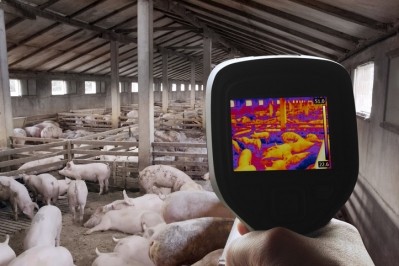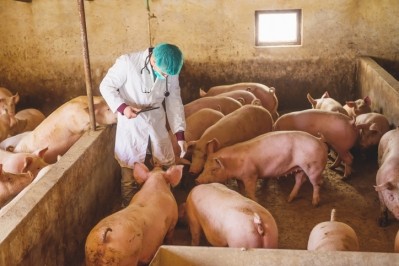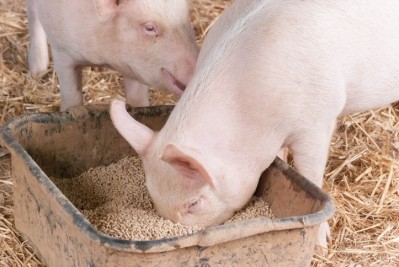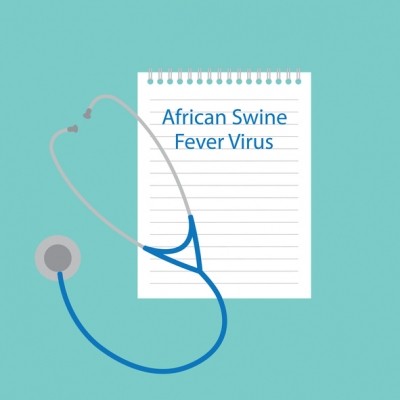US: Studies track in-feed FMD, ASF infection
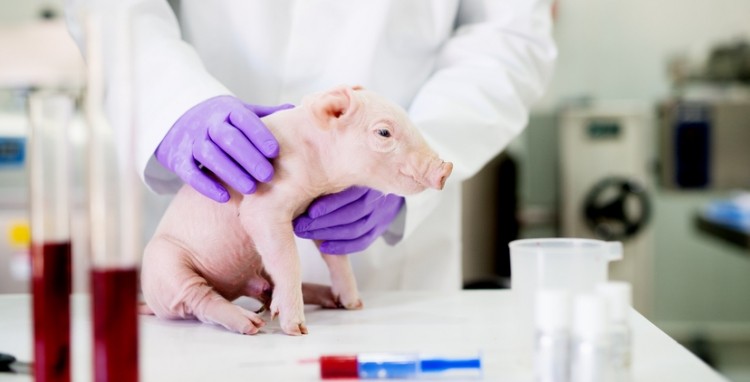
As part of the ongoing response to the possibility that the porcine epidemic diarrhea virus (PEDV) and other diseases could be spread through imported feed ingredients, the Swine Health Information Center (SHIC) in the US has been involved with trials studying other swine diseases, said Paul Sundberg, SHIC executive director.
Previously, this examination process tracked the potential for several foreign swine diseases of concern to survive in feed or feed ingredients for the time it would take them to be imported to the US.
“The interaction with feed is based on a proof of concept study … we have a lot of confidence in it, but we don’t have any more data than we got from that one experiment,” he told FeedNavigator. “We think the window of opportunity for transport [of disease] is still open.
“The next question is – is that window going to be open enough to affect the health of our pigs in the US?”
Infective dose levels explored
The SHIC wants to examine how much of either the African Swine Fever virus (ASF) or Foot and Mouth Disease (FMD) would need to be present in feed for pigs to become infected, said Sundberg. Those diseases were selected because they are present in countries around the world and because of the risk they pose for producers.
With PEDV, previous research has demonstrated that the infective oral dose is quite low, he said. However, the infective oral dose for other diseases like FMD and ASF are not known.
Tracking viruses in feed
The two ongoing studies are looking at both virus infection during normal eating habits with infected feed and at the use of mitigation practices, said Sundberg.
“With PEDV the oral infective dose is very low – whatever mitigant you’d put in the feed, you’d need it to take it down to an extremely low amount in order to make it safe,” he said. “We don’t know what the oral infective dose is for other viruses, so we’re working to find that out and we’re working to see if a mitigant added to the feed could end up being protective by decreasing that viral load in the feed below that oral dose – they’re hand-in-hand experiments.”
The project on ASF was funded by the National Pork Board and is being conducted at the high biosecurity facility in Manhattan, Kansas, he said. Work on the project started earlier this year.
“That experiment has been going on for a few months and we’re hopeful that the results of that will be back before the end of the year,” he said. It began prior to concerns about the outbreak of the disease in China because it had been present in parts of Eastern Europe.
The project on FMD is a being undertake with the US Department of Agriculture (USDA) and was funded by the National Pork Board, the SHIC and USDA’s APHIS, he said. It started this summer at the Plum Island Animal Disease Center (PIADC) research facility on Plum Island, New York. The project is still in early stages.
Looking forward similar work is expected to be done with Classical Swine Fever and pseudorabies, he said.
“What we want is to get as much data as we can to do the best job possible of preventing something of getting here – not just [informing] when it gets here what will we do,” he said. “But to get as much data as we can to do what we need to do to prevent it.”
Background
In May 2017, the (SHIC) released information from a study it funded showing the potential for viruses to contaminate and survive in feed ingredients. These surprising findings led to on-going research on transmission potential and mitigation. A meeting of stakeholders, including representatives of USDA, FDA, universities, industry organizations, producers, the feed processing industry, and SHIC, was held in June 2018. The objective of the meeting, hosted by SHIC and the National Pork Board, was to review current government policies and regulations and to make recommendations about research to help reduce the risk for pathogen transmission via feed and feed ingredients.
In addition to the prioritization of next steps, the stakeholder representatives heard updates from companies and federal agencies engaged in parallel work. FDA’s Center for Veterinary Medicine and USDA’s Animal Health and Plant Inspection Service both have regulatory authority related to feed safety. And USDA’s Center for Epidemiology and Animal Health will help with a review of the scientific literature and will bring experts together to discuss risk.
SHIC is funding university and production company-related research to help define feed risk. And feed processing companies are also contributing to the body of work to help identify feed transmission risk and investigate mitigation. Programs were described and outcomes discussed during the meeting.
At the conclusion of the stakeholder meeting, a prioritized set of next steps for research or investigation was developed.
